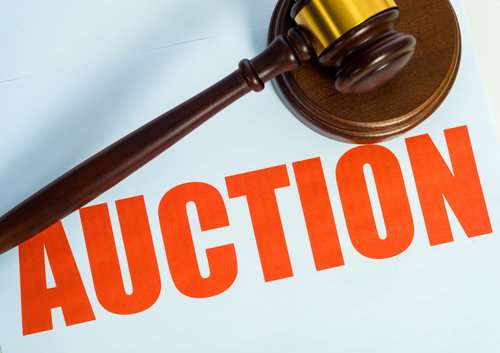Some practical tips to prepare to buy at a farm equipment auction
IN THE SHOP with Rachel
By Rachel Gingell
Farms.com
Spring is coming soon – hooray! Along with warmer temperatures comes one of my favorite things about spring: auction sales.
Did you know that I’m a licensed auctioneer? It’s true. I started working farm equipment auctions as a teenager and I still love the fun and excitement of a good farm auction. This week, I’ll be sharing my best tips to help you prepare so you can great deals at an auction sale.

The most important part of any auction day happens well before the sale – when you prepare to buy. Get yourself two notecards and the auction catalog or sale bill.
Use the first card as a price converter. On one side, list “bid amount” – the amount of money the auctioneer will be calling for. On the other side, list “money paid” – the amount of money you’ll pay, once you add in sales tax and the buyer’s premium. Here’s an example with 6 per cent sales tax and a 10 per cent buyer’s premium
Bid amount Money paid
$1,000 $1,160
$1,250 $1,450
$1,500 $1,740
Of course, you could do these calculations in your head while bidding – or carry a calculator and check your bids frequently. I find it easier, though, to have the amounts written on a card that I can carry with me.
Why is this information important? It’s easy to get carried away on sale day and forget about the added percentages of tax and a buyer’s premium. Knowing exactly how much you’ll be expected to pay at the cashier’s window saves you the embarrassment and frustration of spending more than you intended to.
Of course, if you are tax exempt and the auctioneer doesn’t charge a buyer’s premium, then there’s no need to make your price conversion card.
The second card is your shopping list. Especially at bigger, all-day sales, it’s hard to keep track of what’s selling and how you intended to bid. Use this card to list the lot numbers and your highest bid for each tractor that you’re interested in. Here’s an example:
Lot Tractor Highest bid I paid
121 8N Ford ___ ___
230 Farmall M ___ ___
A list like this helps you stay on track. You can plan when you’ll step away from the sale for a break. You can also plan when to move ahead of the crowd to get a good spot near the next tractor that you are interested in bidding on. Use the “I paid” column to track the tractors you bought and your winning bid amount.
There you have it! Make these two cards before your next big auction sale and you’ll be all set.